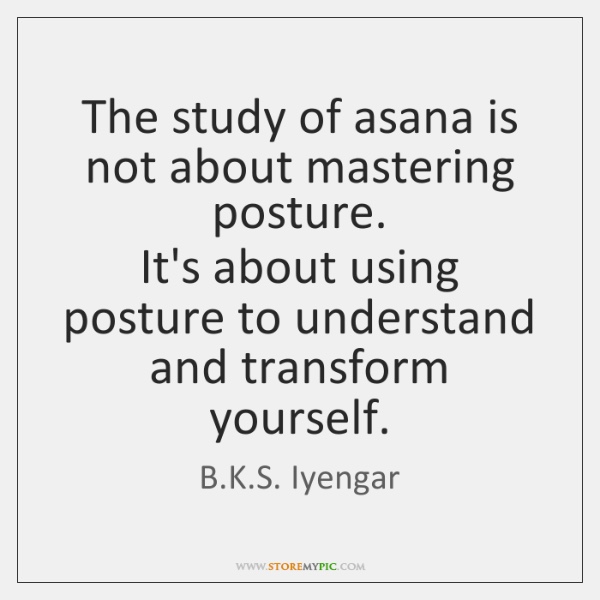From Asana to Pranayama

Our last meeting of the Yoga Sutra Discussion Group covered the 3 yoga sutras on asana (posture). It is always amazing to note that out of the 195 yoga sutras, only 3 have to do with this physical work that we are so familiar with and that many would define as “yoga”.
In discussing those three sutras defining and describing asana, we come to realize the effects and the idea of what it means to “perfect an asana” and how that draws us nearer to the experience of our breath, energy, and ultimately the Self. Asana is not the end, it is only a part of the path.
“The practitioner can be considered firm in his postures when persevering effort is no longer needed. In this stability, he grasps the physiology of each asana and penetrates within, reaching the minutest parts of the body. Then he gains the art of relaxation, maintaining the firmness and extension of the body and consciousness. In this way he develops a sensitive mind. With this sensitivity, he trains his thinking faculty to read, study and penetrate the infinite. He is immersed in the boundless state of oneness which is indivisible and universal.”
Light on the Yoga Sutras of Patanjali bu BKS Iyengar, commentary on Yoga Sutra II.47
When the effort we put into our practice allows us to be steady and stay long enough to spread the consciousness to every corner of our being, we no longer fight the disturbances of the ever-changing world. How often do you want to just jump out of a pose before you even realize you are in it? Can your physically challenging back extension give you as equal balance to the mind as a supported seated posture or Savasana? To dwell perfectly in any action requires sensitivity and attention and only with that benevolence (or lightness) of spirit can we enter into our practice of pranayama (regulation of the breath).
There is a tendency to rush to regulate the breath, and there is no doubt it is a powerful tool to engage and quiet the mind as needed. However, the body is the vessel that moves and holds the power of the breath, and the mind is part of the nervous system that has to be receptive in order to utilize the breath regulation for our benefit. Shakiness and disturbance of either the body or the mind effects our ability to practice pranayama effectively.
At our next meeting of the Yoga Sutra Discussion group, we will be discussing the Yoga Sutras that have to do with the regulation of breath, pranayama. (all below translations are from Light on the Yoga Sutras of Patanjali by BKS Iyengar)
II.49 – Pranayama is the regulation of the incoming and outgoing flow of the breath with retention. It is to be practiced only after perfection in asana is attained.
II.50 – Pranayama has three movements: prolonged and fine inhalation, exhalation and retention; all regulated with precision according to duration and place.
II.51 – The fourth stage of of pranayama transcends the external and internal pranayamas, and appears effortless and non-deliberate.
II.52 – Pranayama removes the veil covering the light of knowledge and heralds the dawn of wisdom.
II.53 – The mind also becomes fit for concentration.
Our next meeting will be Sunday, Feb 28th at 11:00am – still LIVE and on ZOOM! All are welcome.